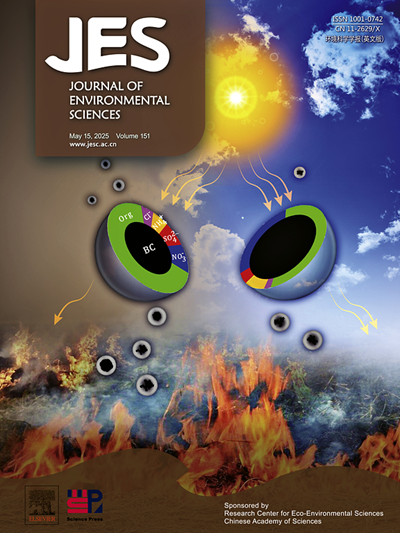Depressive symptoms mediate the relationship between blood volatile organic compounds exposure and short sleep duration among US adults
IF 5.9
2区 环境科学与生态学
Q1 ENVIRONMENTAL SCIENCES
引用次数: 0
Abstract
The associations of volatile organic compounds (VOCs) exposure with short sleep duration (SSD) have rarely been studied. We aimed to evaluate the correlation between VOC exposure and SSD risk, while also exploring the potential mediating influence of depressive symptoms. Blood concentrations of seven VOCs, namely benzene, toluene, ethylbenzene, m-/p-xylene, o-xylene, styrene (collectively known as BTEXS), and 1,4-dichlorobenzene, were analyzed in 2905 U.S. adults. Weighted logistic regression, quantile-based g-computation (QGC), and weighted quantile sum (WQS) regression were employed to investigate associations between selected VOCs and SSD risk. Mediation analyses were conducted to explore the potential mediating effects of depressive symptoms on these relationships. Increased blood levels of BTEXS were positively correlated with SSD risk, with odds ratios (OR) ranging from 1.130 to 1.212 (all P < 0.05). A nonlinear association between toluene concentration and SSD risk was observed (P for nonlinearity = 0.028). Both QGC and WQS analyses indicated a positive association between co-exposure to VOCs and SSD, with styrene showing the highest positive weights (QGC: OR = 1.313, 95 % confidence interval (CI): 1.038–1.660; WQS: OR = 1.386, 95 % CI: 1.111–1.731). Furthermore, BTEXS exposure was positively linked to depressive symptoms, which in turn were significantly associated with SSD risk. Mediation analyses revealed that depressive symptoms partially mediated the relationships between individual and mixed VOCs and SSD risk, with mediation proportions ranging from 15.87 % to 20.54 % (all P < 0.05). These findings indicated that exposure to VOCs increased SSD risk, with depressive symptoms playing a partial mediating role.

求助全文
约1分钟内获得全文
求助全文
来源期刊

Journal of Environmental Sciences-china
环境科学-环境科学
CiteScore
13.70
自引率
0.00%
发文量
6354
审稿时长
2.6 months
期刊介绍:
The Journal of Environmental Sciences is an international journal started in 1989. The journal is devoted to publish original, peer-reviewed research papers on main aspects of environmental sciences, such as environmental chemistry, environmental biology, ecology, geosciences and environmental physics. Appropriate subjects include basic and applied research on atmospheric, terrestrial and aquatic environments, pollution control and abatement technology, conservation of natural resources, environmental health and toxicology. Announcements of international environmental science meetings and other recent information are also included.
 求助内容:
求助内容: 应助结果提醒方式:
应助结果提醒方式:


